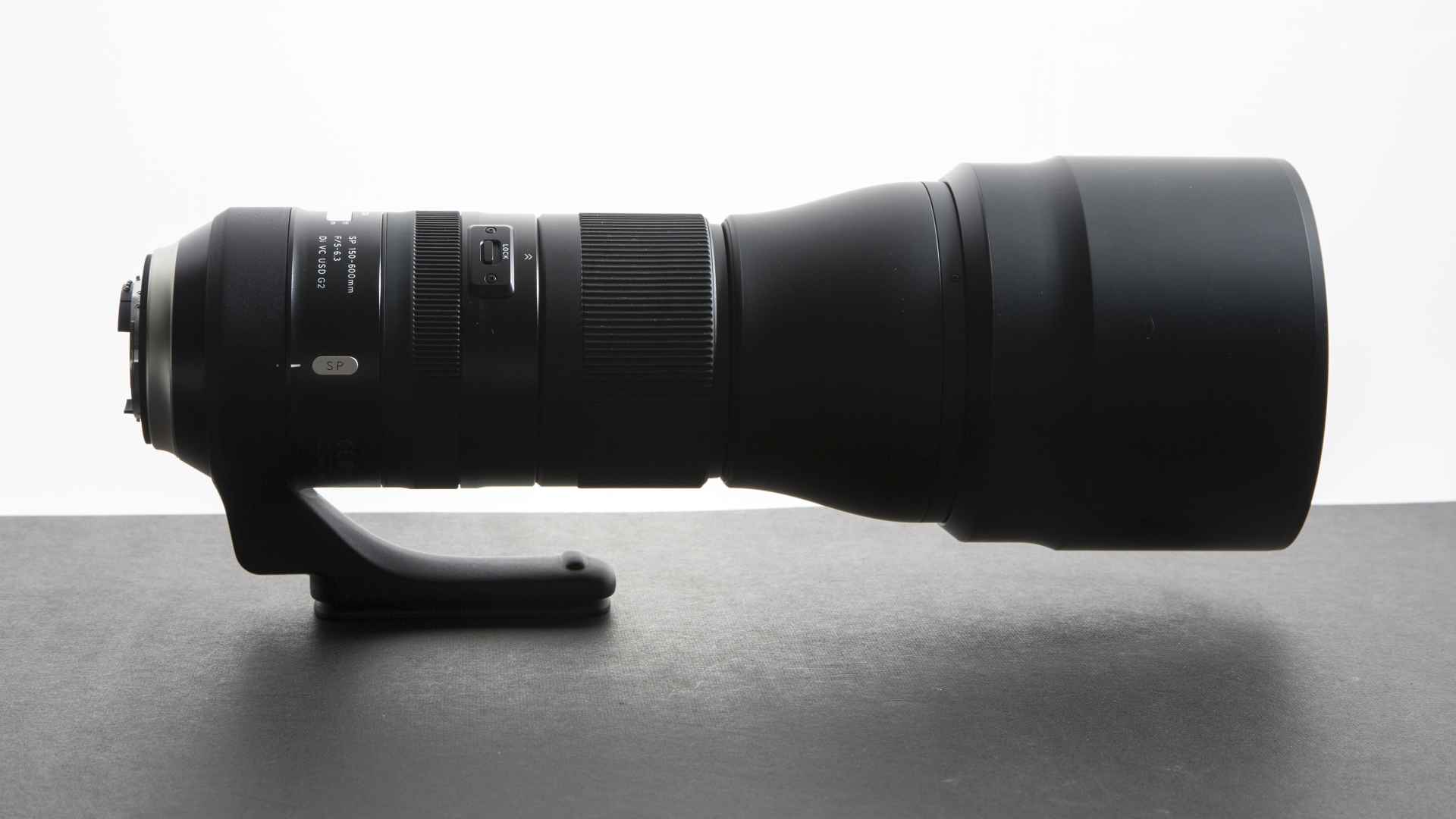One of the issues that arises after any Olympics is the inevitable widespread outbreak of lens envy. Yes, those hefty Canon lenses the photogs on the sidelines are hauling look delicious but their extortionate price tags will leave a bad taste in your mouth. That’s where Tamron’s super-telephoto lens comes in as a budget alternative. We announced at the start of September that Tamron was bringing out an update to their 150-600mm lens, the Tamron SP 150-600mm f / 5-6.3 Di VC USD G2. Well now we’ve given it a whirl and think that this is definitely going to fill that giant lens sized hole in your heart without ripping one in your wallet.
Lens Body

The Tamron SP 150-600mm f / 5-6.3 Di VC USD G2 model A022 (which we’re calling the A022 from now on to spare our weak little fingers typing that out again), like any super-telephoto is a big boy. However it’s surprisingly lightweight as our team were able to take it out and about and use it for around 3 hours without any whiny arm cramping. That’s handheld we’re talking, which unless the Rock has taken up photography (Hi Dwayne!) is simply not possible with many 500mm and 600mm lenses where even five minutes lugging it around without a support is a pain. In contrast to the previous A011 model it’s slightly bigger and heavier, (2mm and 50g to be exact) but is still an easy lift.
Just like it’s predecessor the A022 uses an extendable barrel style zoom rather than internally tightening up. However there have been obvious mechanical improvements with it sliding out far smoother. The new Flex Zoom Lock is also much appreciated, with the ability to lock the zoom at any focal length and spare yourself worrying about mucking it up when changing something else.
In addition, the A022 has some new tricks to hook it up. The updated tripod ring has a grooved bottom that can be installed directly onto an Arca Swiss system. Unfortunately,when using our model of tripod, the irritating “safety lock” is obstructed by this ring. This meant we had to screw on the quick release plate.Incidentally, the tripod ring has two screw holes on the bottom. This means you can use one or the other to accommodate the center of gravity according to the body weight of what you’re working with.
Auto-Focus
Most long guns are used to shoot nature shots, sports and other fast moving objects. Focus speed in that regard is key and the Tamron A022 in this regard performs slightly above average, but nothing spectacular.

When testing it out with the Nikon D810, single point and group autofocus worked better than with the previous generation. You can also manually twist the focus ring to accelerate focus on approximate locations first. Overall, performance has improved, but it still cannot compared with Canon/Nikon’s fixed focal length super telephoto lens. Of course, that’s why those models are 4-6 times more expensive. The focus limiter of the A022 model has got another improvement over the previous generation. The A011 was limited to Full or 15m – infinity, and 15m was a little too much, so the A022’s option of 10m-infinity is far more practical.
Most the time you’ll likely benefit using the A022 in autofocus but if you’re a manual junkie then know that twisting the focus ring from 2.2m to infinity takes about 110˚ of turning.

On one final note, earlier in the month along with the announcement of the A022 lens we published news on the TC-X14 teleconverter that hooks up with it. Wanting to kill two birds with one stone we hooked up the TC-X14 for some joint testing. Once connected, the maximum aperture was reduced to only f / 9, and although the D810 could still autofocus, its speed at doing so was significantly decreased.
Optical Vibration
The new VC optical vibration system has been one of the selling point improvements for the Tamron A022. This time around there are three modes. In addition to the standard mode (mode 1) and panning mode (mode 3), there is a third no-preview mode (mode 3). This third mode doesn’t allow a preview in the viewfinder of the stabilisation effect before capturing an image but supposedly adds an additional boost to stabilisation (listed at 4.5 compensation) to make up for that. A little disconcerting to not see how your pic is going to turn out first but it was perhaps developed with the run and gun event-coverage crowd in mind.

To test the performance of the new shock mode, we set the lens to 600mm at 1/20s and 1/40s. We then took 12 pics in mode 1 and mode 3, to get a clear idea of the success rate between them.

The results for the new no-preview mode were, if not awe inspiring, decent. More than half the images taken could be ranked as “Good” or “OK”. However, we noticed that the performance of mode 1 and mode 3 was pretty evenly split, with standard mode 1 even charting slightly better. We’d guess that’s because even though mode 3 has additional shock compensation, when using mode 1, the transmissive viewfinder makes all the difference. With the ability to preview, we could observe, and wait for the best moment to press the shutter smoothly. While using mode 3, you’re shooting blind with the viewfinder image constantly shaking.
Optical Performance
The A022 uses 21 lens elements in 13 groups, adding one more element than the previous A011. But we’re not optical engineers, our judging is done solely through how it shoots.
As a super-telephoto lens, we were most concerned about how as a 600mm the A022 stacks up against the existing A011 model. When pitting them against each other we found that the A022 has a higher sharpness at full aperture. We also tested out the A022 at different focal lengths, different apertures, and looked at the performance at the edge of the image.
A022’s performance 150mm

A022’s performance 300mm

A022’s performance 600mm

In the central region of about 300mm, compared to 150mm and 600mm, performance was a little better. There was a relatively sharper image but also a little less colour fringing. There were slight aberrations, flare and ghosting, but nothing out of control. Because we have to give the obligatory mention, no it’s not any good at bokeh but it’s a telephoto lens, so it wasn’t expected to be useful for that in the slightest.
Later we connected the TC-X14 extension for testing. Theoretically the x 1.4 boost should jack up the 600mm to 840mm, but as shown in our photos’ EXIF data it was actually closer to 850mm, increasing distance by x 1.416. However, with this boost comes an unfortunate softening effect. The TC-X14 teleconverter will work in a pinch with the Tamron A022 if needed but shouldn’t be relied upon if you have a constant cause to shoot with something above 800mm.

Summary
The Tamron SP 150-600mm f / 5-6.3 Di VC USD G2 (model A022) when compared to the previous generation A011 is expensive (US$1,399 vs US$999), but there are improvements to justify the cost. Although advances in optics and autofocus are relatively minor, the changes to its lens body design and its anti-shock performance are a major boon. The A011 was fine, but the A022 is simply better and definitely worth considering. It may be an underdog in the telephoto lens market but it has bite.


